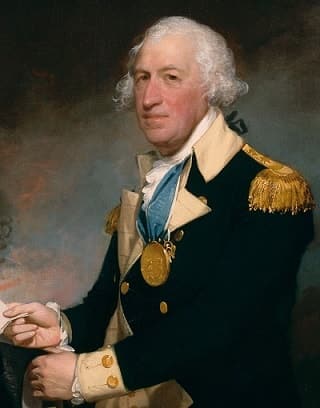Introduction
In 1777 the British launched an offensive from their position in Canada against the Americans in New York. This invasion would culminate with a crucial American victory near the town of Saratoga in upstate New York. This victory is regarded as the turning point of the American Revolutionary War and persuaded France to enter the war on the side of the Americans. Below you will find a list of interesting facts for kids and adults alike about the battles of Saratoga; there is information on where the battles were fought, how the colonist won, and what factors led to the American victory.Click here for a great selection of Amazon.com books about the Battle of Saratoga.
Prelude to the Battle of Saratoga
- In 1777 the British feared certain European countries, especially the French, might enter the war on the side of the Americans. They hoped to eliminate this threat by quickly ending the rebellion. British General Burgoyne devised a plan and sent two armies south from Quebec with the objective of capturing Albany, New York; he led one of these armies.
- The British invasion of New York was at first a success with the British capturing the strategically important Fort Ticonderoga which had been taken from them earlier in the war. See Fort Ticonderoga Battle Facts.
- After the capture of Fort Ticonderoga things started to fall apart for the British mainly due to the loss of approximately 1000 men at the Battle of Bennington on August 16, 1777. Burgoyne had sent some of his troops along with their Indian allies to raid Bennington Vermont in order to obtain supplies. A rebel force of around two thousand men killed or captured most of the British soldiers.
- The defeat at the Battle of Bennington set the stage for British General John Burgoyne's surrender at Saratoga later in 1777. His Indian allies basically abandon him, he was not able to obtain the much needed supplies he had sent his soldiers to Vermont for, and it slowed up the British advance towards Albany giving the rebels much needed time to prepare for the battles that would occur near Saratoga.
- Another major factor, along with the loss at the Battle of Bennington, which would lead to the British defeat at Saratoga, was the fact that the second British army that was suppose to join up with General Burgoyne for the attack on Albany was slowed down by the colonist.
- Despite all the things that had gone wrong with his plan to invade New York and capture Albany British General Burgoyne made the mistake of moving forward to Albany.
Facts about the Two Battles at Saratoga
- The Battle of Saratoga was actually two battles that took place 18 days apart on September 19th and October 7th 1777 on the same battlefield 9 miles (14 kilometers) south of Saratoga in upstate New York.
- On September 19th (1777) British General Burgoyne attacked the Americans at Freeman's Farm on the west bank of the Hudson just north of Albany. The rebel army was commanded by Horatio Gates and Benedict Arnold. The fighting was intense and although the Americans withdrew and the British controlled the battlefield at days end it was a very costly win leaving the already diminished British troops with even fewer numbers.
- After waiting for reinforcements and supplies that never came General Burgoyne, instead of retreating, decided to attack the Americans again on October 7th (1777) at Bemis Heights. This was a huge mistake and the British were forced to retreat to the small town of Saratoga.
- Held up in Saratoga surrounded by the Americans General Burgoyne had no other choice but to surrender; which he did ten days after the battle. This was the first time the British surrendered in the American Revolutionary War.
